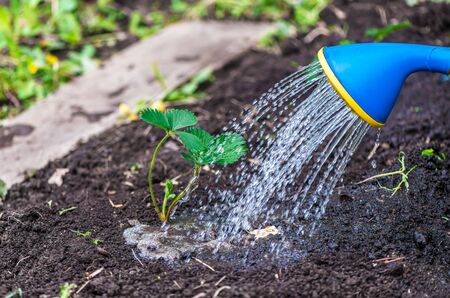Understanding Drip Irrigation in Indian Agriculture
Drip irrigation, locally known as “drip system,” has rapidly gained ground among Indian farmers, especially in states like Maharashtra, Tamil Nadu, Gujarat, and Karnataka. With the diverse agro-climatic zones across India—from the arid Deccan Plateau to the fertile Indo-Gangetic plains—farmers face unique challenges in water management. Drip irrigation systems offer a solution by delivering water directly to the root zone of crops, minimizing wastage and ensuring optimal moisture levels even in regions plagued by erratic monsoon patterns. Over the past decade, Indian agriculture has witnessed a notable shift towards these systems due to increasing water scarcity, higher input costs, and government subsidies under schemes like Pradhan Mantri Krishi Sinchayee Yojana (PMKSY). While traditional flood irrigation remains common, more growers are embracing drip for its promise of higher yields, better crop quality, and efficient resource use. However, despite its growing popularity and importance for staple crops like sugarcane, cotton, and horticultural produce, many farmers encounter frequent failures in their drip setups. Understanding how these systems work within the Indian context—and why they sometimes falter—is key to unlocking their full potential on desi soil.
2. Common Causes of Drip Irrigation Failures in Indian Fields
Drip irrigation has become a lifeline for many Indian farmers, especially with increasing water scarcity and unpredictable monsoons. However, despite its potential, the system often faces hiccups in real-world application across Bharat’s diverse regions. Let’s explore the key reasons behind these failures and why they are particularly relevant to our local fields.
Clogging Due to Hard Water & Sediment
One of the most frequent issues is clogging, primarily caused by hard water—commonly found in states like Maharashtra, Punjab, and Rajasthan. Mineral-rich groundwater leaves deposits inside pipes and emitters, blocking the flow. Silt and organic debris from unfiltered pond or canal water further add to this headache.
Poor Quality Materials
Desi jugaad sometimes leads to cost-cutting in material choice. Pipes and emitters made from substandard plastics or recycled materials degrade quickly under harsh Indian sun (loo), leading to leaks, cracks, and reduced lifespan. Fake “branded” parts from local markets also contribute to early system breakdown.
Erratic Power Supply
Power cuts (load-shedding) are a daily reality in rural India. Inconsistent voltage or long outages impact automated drip systems reliant on electric pumps or timers. This disrupts scheduled irrigation cycles, causing water stress or overwatering—both harmful to crops.
Improper Installation Practices
Lack of proper training or skipping manufacturer guidelines during installation is another root cause. Incorrect spacing of emitters, improper joining of pipes (without proper gitti or adhesive), and poor alignment lead to uneven water distribution and wastage.
Quick Overview: Major Causes & Their Impact
| Cause | Common Regions | Impact on System |
|---|---|---|
| Clogging (Hard Water/Sediment) | Maharashtra, Punjab, Rajasthan | Poor water flow, blocked emitters |
| Poor Quality Materials | Pan-India (esp. local markets) | Leakages, cracks, short lifespan |
| Erratic Power Supply | Northern & Central India | Irrigation scheduling issues |
| Improper Installation | All states (untrained installers) | Uneven watering, wastage |
Bharatiya Farmer’s Insight:
Kisan-bhais often share stories about “choked lines” after just one season or “pipes melting like jalebi” under the summer sun. Recognizing these causes early is the first step towards building a more resilient and sustainable drip irrigation setup for your khet (field).
![]()
3. Impact of Local Conditions: Water Quality, Soil & Climate
When considering drip irrigation systems in India, it is crucial to understand the significant influence of local conditions. Unlike some Western countries where water and soil are relatively uniform, Indian farmers must navigate unique challenges posed by regional factors.
Water Quality: The Salinity Challenge
One of the major reasons for drip irrigation failures in India is the presence of alkaline or saline water. In many states like Gujarat and Rajasthan, groundwater often contains high levels of dissolved salts. Over time, these salts accumulate inside drip lines and emitters, leading to clogging and reduced efficiency. Farmers have noticed that white crusts form on emitter outlets, a tell-tale sign of salt build-up. Regular flushing with fresh water and periodic acid treatments are traditional methods used by Indian farmers to combat this issue.
Soil Types: Red & Black Soil Concerns
India’s diverse geography means farmers work with a wide variety of soils—two prominent types being red soil (found in Karnataka, Tamil Nadu) and black cotton soil (in Maharashtra, Madhya Pradesh). Red soils are generally low in nutrients and can cause uneven water distribution due to their loose structure. On the other hand, black cotton soils tend to expand and contract dramatically with moisture changes, sometimes causing physical damage to drip lines buried underground. Traditional practice in such areas includes laying drip lines above ground or using protective covers made from local materials like coconut husk or dried leaves.
Climate: Monsoon Unpredictability
The Indian monsoon is both a boon and a challenge for agriculture. Unpredictable rains can lead to either excessive flooding or prolonged droughts, both of which impact drip irrigation systems. Heavy rainfall may wash away surface-laid drip pipes or cause waterlogging that interferes with system performance. In contrast, extended dry spells increase reliance on drip systems, making maintenance even more critical. Many seasoned farmers time their system checks just before the onset of monsoon and after its retreat—a practice passed down through generations—to minimize weather-related failures.
Traditional Wisdom Meets Modern Technology
Indian farmers often blend modern drip techniques with age-old wisdom. For instance, using locally available organic filters such as sand or charcoal before water enters the system helps reduce sediment load—a trick especially popular in rural Maharashtra and Andhra Pradesh. Such adaptations not only prolong the life of the equipment but also offer cost-effective solutions tailored to local realities.
Summary
Understanding and respecting these uniquely Indian factors—water salinity, varied soil types, and unpredictable climate—is essential for successful drip irrigation. By combining traditional know-how with regular system maintenance, Indian farmers can overcome many of the hurdles that commonly cause drip irrigation failures.
4. Traditional Indian Maintenance Practices & Farmer Jugaad
India’s farmers have long faced the challenge of keeping their irrigation systems working efficiently, especially in areas where resources and technical support are limited. Over generations, they have developed ingenious and practical solutions to common drip irrigation failures, blending tradition with innovation—what we affectionately call “jugaad.” Here are some time-tested Indian maintenance practices and clever hacks that help prevent clogging and prolong the life of drip systems.
Time-Tested Local Solutions
1. Filtering Water with Old Sarees: Before water enters the drip system, many farmers filter it using layers of old cotton sarees or dhotis. The fine weave traps silt and debris, preventing emitters from getting blocked.
2. Clay Pot Sedimentation: In regions like Maharashtra, clay pots are used as mini sedimentation tanks. Water is poured into these pots and left to settle, allowing heavier particles to sink before the cleaner water is fed into the pipes.
3. Periodic Manual Flushing: Farmers in Tamil Nadu and Punjab periodically open the end caps of drip lines to flush out accumulated mud and biological slime—a simple, effective way to maintain flow rates.
Common Jugaad Techniques
| Technique | Description | Benefit |
|---|---|---|
| Saree Filtration | Water passes through folded sarees at the tank inlet | Prevents sand and organic matter from entering system |
| Clay Pot Pre-Filtration | Settling heavy particles using locally available pots | Reduces emitter clogging risk |
| Bamboo Stick Cleaning | Pushing thin bamboo sticks through clogged emitters | Restores blocked drippers without special tools |
Sustainable Practices Passed Down Generations
Farmers often share these low-cost techniques within their communities, adapting them for different water sources—from well water in Gujarat to canal water in Andhra Pradesh. This knowledge transfer helps even smallholders maintain their drip systems without relying heavily on costly spare parts or technicians.
The Value of Jugaad in Drip Irrigation Maintenance
The spirit of jugaad embodies resilience and resourcefulness. By embracing traditional Indian methods—like filtering with sarees or flushing lines regularly—farmers can significantly reduce drip irrigation failures while minimizing costs. These approaches not only keep systems running longer but also empower rural communities to innovate with what’s at hand, making sustainable agriculture truly accessible.
5. Community Wisdom: Learning from Fellow Farmers
India’s rural heartland is rich with local wisdom, especially when it comes to agricultural practices like drip irrigation. While modern systems sometimes fail due to technical glitches or unfamiliarity, traditional knowledge passed down at choupals (village meetings) and kisan melas (farmers’ fairs) often holds the key to practical solutions.
Sharing Experiences at Choupals
At evening choupals under the banyan tree, farmers gather to discuss challenges and exchange real-life experiences in their own dialects—be it Hindi, Marathi, Telugu, or Punjabi. For instance, Bhaiyya Ram from Uttar Pradesh shared how he regularly checks for pipe blockages by flushing the system with well water every month, a tip he learned from his elders.
Kisan Melas: Platforms for Collective Learning
Kisan melas are vibrant hubs where successful farmers demonstrate their working drip systems. In Tamil Nadu’s fairs, local experts show how using jaggery water helps clear minor clogs naturally without harsh chemicals. Similarly, Rajasthani farmers recommend covering exposed pipes with old sarees or gunny sacks to prevent heat damage—a simple trick discussed openly among peers.
Local Solutions That Work
Many smallholders swear by bio-filters made from coconut husks and sand to trap silt before it enters drip lines—a method perfected over generations. In Gujarat’s Saurashtra region, community leaders organize workshops in Gujarati on how to maintain water pressure using low-cost gravity tanks, ensuring everyone understands the nuances in their mother tongue.
The Strength of Collective Knowledge
These grassroots interactions foster a sense of unity and trust. Farmers feel confident experimenting with tips that have worked for their neighbours rather than relying solely on distant experts or manuals in English. By blending traditional Indian advice with modern techniques, communities create more resilient drip irrigation systems tailored to local conditions and needs.
6. Government Support and Local Resources
For Indian farmers facing challenges with drip irrigation, there is a wealth of government support and local resources designed to help overcome these issues. Understanding and accessing these services can make a real difference in preventing drip system failures and improving farm productivity.
Overview of Government Schemes
The Indian government has launched several initiatives to promote efficient water use in agriculture. One of the most notable is the Pradhan Mantri Krishi Sinchayee Yojana (PMKSY), which includes the Micro Irrigation Fund (MIF). This scheme provides financial assistance and subsidies for installing modern irrigation systems like drip and sprinkler. Eligible farmers can receive a significant subsidy share, making it more affordable to set up or upgrade their drip irrigation infrastructure.
How to Apply for PMKSY Micro Irrigation Support
Farmers interested in availing PMKSY benefits should approach their local Agriculture Department office or Krishi Vigyan Kendra (KVK). Application forms are typically available both online through state agriculture portals and offline at district-level offices. The process involves submitting basic land records, Aadhaar details, and proof of agricultural activity. Many states now offer digital tracking and helplines to assist applicants.
Agri-Extension Services and Technical Assistance
Apart from subsidies, agri-extension services play a crucial role in ensuring the success of drip irrigation projects. Extension officers visit farms, provide hands-on training, diagnose system failures, and recommend solutions tailored to local soil and crop conditions. Many states also run demonstration plots where farmers can see successful drip setups in action.
Regional Language Support
To bridge the language gap, technical guidance materials—including manuals, video tutorials, and troubleshooting guides—are increasingly available in regional languages such as Hindi, Tamil, Telugu, Marathi, Kannada, and Bengali. Farmers can request these resources at their nearest KVK or through WhatsApp groups managed by local agriculture departments.
Connecting with Farmer Networks
Joining local farmer producer organisations (FPOs) or community WhatsApp groups can be highly beneficial. These platforms often share real-time advice on drip irrigation maintenance, weather updates, and traditional tips adapted for local needs. Participating in government-sponsored training camps (Shibirs) is also encouraged to stay updated on new schemes and best practices.
By taking advantage of both government schemes like PMKSY and local extension services—especially those offering support in regional languages—farmers can minimise drip irrigation failures. Leveraging these resources ensures not only better yields but also long-term sustainability for Indian agriculture.


